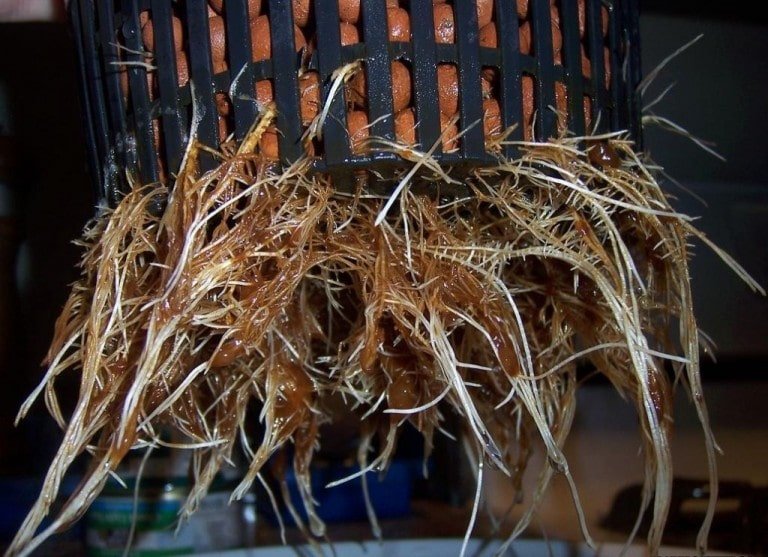If you’ve done a few grows then you know how important it is to dial in your nutrient cycles, make sure there’s fresh air in your grow, and how to keep pests down to a minimum. It’s strange, then, that all of a sudden your grow starts to wilt, show signs of burning, or completely dies altogether. If it’s not your lighting, your feeding cycles or nutrients, or pests, what could be causing all these problems?
If you’re using the hydroponic or aeroponic system, lift your reservoir and smell the inside of the tank. If you’re using soil try to lift your buckets or get a whiff of what’s going on around your plant’s roots. Notice that nasty, moldy smell? That’s Root Rot, and if your plants have it your grow can go from healthy to dead in a matter of days. The good news is that it’s preventable and treatable, and you won’t have to necessarily scrap your plant. Now, the first big part of solving a problem is identifying it. Remember: whatever’s happening up top is usually a sign of what’s going on below. If your leaves show signs of damage a likely culprit is root damage, so if you notice things like nutrient burn when your nutrients are measured correctly, check your roots.
If you lift the medium housing your infected plant you’ll see brown, slimy roots. Note that roots can be stained by their nutrients, so it’s sometimes easy to misdiagnose root rot. When your roots are rotting, they begin to look brown and slimy, versus the smooth creamy color, they turn in healthy hydroponic systems. Ideally, the lighter your roots are the better they’re ability is to breathe and soak up nutrients properly. Prevention Unlike pest infestations that can happen with or without prevention, root rot is something that can be prevented before you dive head-first into your grow. The two main components to preventing root rot are temperature and oxygen within your medium.
The reason plants may smell bad when they’re in a humid-filled room is because they can’t breathe. Your plants’ roots need to be able to breathe, and if their roots can’t breathe then the plant can’t grow. For soil growers, oxygenating your grow can be as simple as growing in prune pots that allow your roots to breath, or just making sure that the roots are planted (and growing) deep enough to cover them, with soil loose enough for them to breathe well. For hydroponic or aeroponic growers, make sure you have a large enough air pump and air stones to keep your reservoir water bubbling, giving your roots oxygen that’ll let them open up and take in nutrients instead of closing and locking them out.
High temperatures will also promote root rot. If it’s hot in your grow area, the water of your reservoir (and the water in the soil) will be warm, too. If your water is warm and your medium is warm, you’ve got the building blocks of mold. Then your hydro reservoir traps all that moisture in that tank, creating more and more infected water which will then infect your plant roots. Even something like exposing your water to light when changing out water can warm it, creating environments mildew loves. Make sure you’ve got proper ventilation in your grow room to keep your water around 72 degrees and change the water in your reservoir regularly. Treatment
Well, if you’ve got root rot then you need to treat it. Now, before treatment, note that those brown leaves and roots will likely never recover. The name of the game here is regrowth, looking for new, healthy roots and leaves, so any dead or rotting material you’ll want to cut off. Then you’ll want to treat your water with inoculates, nutrients that will help in the production of new growth and the prevention and eradication of diseases. These nutrients, like Myco Maximum, contain bacteria and fungi to break down whatever’s causing the rot, allowing fresh roots and plant life to grow to fruition. Adding something like Myco maximum is also a great idea to help as a preventative before any rot appears. And remember: think regrowth. Don’t focus on what’s dead- get rid of it. Focus your energies on controlling your environment and your water, and you should see the results of new growth. Heaven forbid you do not see regrowth, you may need to toss the plant out of your garden which is a pain. But it’s better to have one less plant out of your grow than a few infected plants that won’t grow all the way.



